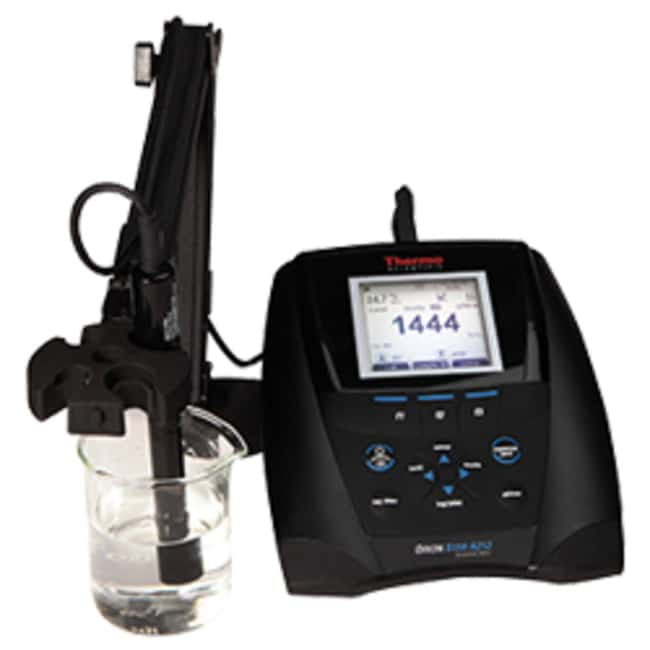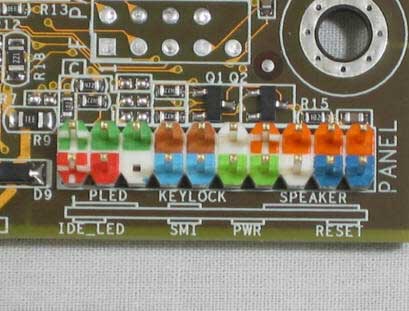Orion Model 115 Conductivity Meter Manual
.Conductivity or TDS and Temperature Intelligent auto ranging improves ease of use Waterproof case Automatic or manual. Versatile meter can be powered in. Remove the conductivity cell and temperature probe from the meter. Perform a manual calibration on the meter and set the cell constant to 1.000 cm-1. Set the temperature value to 25.0 °C and turn the temperature compensation off. Refer to the appropriate meter user guide for directions on cell constant and temperature adjustment. 5.34 The Conductivity of 0.01 M KCl solution at 25°C should be 1.41 mS/cm.+/- 0.01. 5.35 The instrument is now ready to measure the conductivity of unknown solution. 5.36 Remove the conductivity cell and temperature probe from the standard solution. 5.37 Rinse it with distilled water.
- Orion 115 Conductivity Meter Manual
- Orion Model 115 Conductivity Meter Manual Free
- Orion Model 115 Conductivity Meter Manual Download
- Orion Model 115 Conductivity Meter Manual Instructions
- User Manual Thermo Scientific Orion Star A220 Series Electrochemistry Portable Meters 68X Revision A June 2015 Important Note Please read this user guide thoroughly before using your meter.
- Manual Calibration – When the pH stops flashing the meter will display the actual. Thermo Electron CorporationIX-4 Orion Star Series Meter Conductivity.
View
33Download
15

Embed Size (px)
Orion 115 Conductivity Meter Manual
DESCRIPTION
ph
Text of Ph Meter and Conductivity Meter
RAFAEL G. MACARAIG TUP-Taguig Bachelor of Engineering

pH meter
pH meter is a device used for potentiometric pH measurements.
A pH meter is an electronic instrument measuring the pH (acidity or alkalinity) of a liquid (though special probes are sometimes used to measure the pH of semi-solid substances). A typical pH meter consists of a special measuring probe (a glass electrode) connected to an electronic meter that measures and displays the pH reading.
Orion Model 115 Conductivity Meter Manual Free
pH can be measured using either pH indicators (like phenolphtaleine) - in form of solution or pH strips - or using potentiometric method. Strips are very useful when all you need is 0.2-0.5 pH unit accuracy. When you need higher precision, pH meter is the only way to go.In potentiometric methods you measure potential difference between known reference electrode and the measuring pH electrode. Potential of the pH electrode depends on the activities of hydronium ions. This dependence is described by Nernst equation, thus once the potential has been measured you can calculate the activity. As a first approximation activity is identical to the ions concentration.pH meter is nothing else but precise voltmeter, connected to the pH electrode, and scaled in such a way that it displays not the measured potential, but ready pH value.Browse our site to find out more about pH, about pH meter and its history, about pH electrodes and about pH measurements.
Types of pH meterspH meters range from simple and inexpensive pen-like devices to complex and expensive laboratory instruments with computer interfaces and several inputs for indicator and temperature measurements to be entered to adjust for the slight variation in pH caused by temperature. Specialty meters and probes are available for use in special applications, harsh environments, etc.The first commercial pH meters were built around 1936 by Radiometer in Denmark and by Arnold Orville Beckman in the United States. While Beckman was an assistant professor of chemistry at the California Institute of Technology, he was asked to devise a quick and accurate method for measuring the acidity of lemon juice for the California Fruit Growers Exchange (Sunkist). Beckman's invention helped him to launch the Beckman Instruments company (now Beckman Coulter). In 2004 the Beckman pH meter was designated an ACS National Historical Chemical Landmark in recognition of its significance as the first commercially successful electronic pH meter. In the 1970s Jenco Electronics of Taiwan designed and manufactured the first portable digital pH meter. This meter was sold under Cole-Parmer's label.
Calibration and useFor very precise work the pH meter should be calibrated before each measurement. For normal use calibration should be performed at the beginning of each day. The reason for this is that the glass electrode does not give a reproducible e.m.f. over longer periods of time.Calibration should be performed with at least two standard buffer solutions that span the range of pH values to be measured. For general purposes buffers at pH 4 and pH 10 are acceptable. The pH meter has one control (calibrate) to set the meter reading equal to the value of the first standard buffer and a second control (slope) which is used to adjust the meter reading to the value of the second buffer. A third control allows the temperature to be set. Standard buffer sachets, which can be obtained from a variety of suppliers, usually state how the buffer value changes with temperature.For more precise measurements, a three buffer solution calibration is preferred. As pH 7 is essentially, a 'zero point' calibration (akin to zeroing or taring a scale or balance), calibrating at pH 7 first, calibrating at the pH closest to the point of interest ( e.g. either 4 or 10) second and checking the third point will provide a more linear accuracy to what is essentially a non-linear problem. Some meters will allow a three point calibration and that is the preferred scheme for the most accurate work. Most better meters will have a provision to account for temperature coefficient corrections, and better pH probes have temperature probes built in.The calibration process correlates the voltage produced by the probe (approximately 0.06volts per pH unit) with the pH scale. After each single measurement, the probe is rinsed with distilled water or deionized water to remove any traces of the solution being measured, blotted with a clean tissue to absorb any remaining water which could dilute the sample and thus alter the reading, and then quickly immersed in another solution.
Orion Model 115 Conductivity Meter Manual Download
Conductivity MeterA conductivity meter measures the amount of electrical current or conductance in a solution. Conductivity is useful in determining the overall health of a natural water body. It is also a way to measure changes in wastewater procedures at water treatment plants. Conductivity meters are common in any water treatment or monitoring situation, as well as in environmental laboratoriesConductivity BasicsConductivity is the electrical current in a solution, but that value depends on the liquid's ionic strength. It also relies on which ions are present, in what concentration and in what form, such as what state of oxidation or mobility the ions are in. Ions carry a negative or positive electrical charge: anions are negative and cations are positive. In natural water bodies, the ions that contribute to high conductivity result from dissolved minerals and salts.Temperature DependenceThe reading of a conductivity meter is usually without a temperature correlation. Since ionic strength, and therefore conductance, is temperature-dependent, the reading may be inaccurate. Thus, many conductivity meters have a specific conductance measurement as well. When in the specific conductance mode, the meter reads the conductivity of the solution at 25 degrees Celsius, not at the actual temperature. This results in a more standardized reading.Salinity and Total Dissolved SolidsSalinity is the amount of dissolved salts in a solution. Conductivity meters equipped with a salinity option internally convert the conductivity reading to one of salinity. Fresh water bodies should have a much lower salinity concentration than ocean water, which is estimated between 20 and 30 parts per trillion, according to Washington State's Department of Ecology. Total dissolved solids can be determined by multiplying the conductivity measured in microSeimens by a factor of 0.67
Orion Model 115 Conductivity Meter Manual Instructions
CalibrationCalibration leads to a more accurate reading. To calibrate a meter, follow the instructions for that meter; in general, the steps are easy and standardized. The meter usually has a menu item that allows you to enter the calibration mode or a setting on the side that you can adjust with a small screwdriver or tool. Place the probe in a solution with a known conductivity value and temperature and set the meter to that conductivity. Sometimes several standards are required.